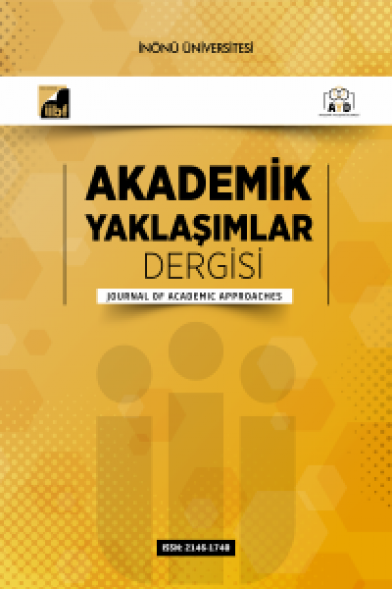Uluslararası Ham Petrol ve Altın Fiyatlarının Amerikan Doları ile İlişkisi: Ampirik Bir Uygulama
Bu çalışmada, uluslararası altın ve petrol fiyatlarının Amerikan doları ile etkileşimi 1989:01 ve 2013:12 dönemi için araştırılmıştır. Bu bağlamda öncelikle ADF ve DF-GLS birim kök testleri yapılmıştır. Bu test sonuçlarına göre her üç değişken de birinci farkı alınmak suretiyle durağan hale gelmektedir. Birim kök testlerinin ardından Vektör Otoregresif (VAR) modeli etki tepki analizi gerçekleştirilmiştir. Buna göre, Amerikan dolarında meydana gelen bir standart hatalık şok altın ve petrol fiyatlarını negatif etkilerken, altın ve petrol fiyatlarında meydana gelen bir standart hatalık şok, Amerikan dolarını negatif, birbirlerini ise pozitif etkilemektedir.
Anahtar Kelimeler:
Altın, Ham Petrol, ABD Doları, VAR, Etki-Tepki
In this study, the international gold and crude oil prices interaction with the U.S. dollar between the period of 1989:01 and 2013:12 were investigated. In this context, primarily the ADF and DF-GLS unit root tests were conducted. According to the results of this test, all three variables by taking the first difference is becoming stationary. Following the unit root tests Vector Autoregressive (VAR) model impulse-response analysis was carried out. According to impulse-response analysis results, a shock on the U.S. dollar, gold and crude oil prices negative affects. In addition to, gold and crude oil price shocks resulting on the U.S. dollar negative, and positive affect each other
___
Capie, F., Mills, T.C., Wood G., 2005, Gold as a Hedge against the Dollar. Journal of International Financial Markets Institutions and Money, Vol. 15, pp. 343-352.Charemza, W.W. and Derek, D.F., 1992, New Directions in Econometric Practise General to Spesific Modelling,Cointegration and Vector Autoregressions, England: Edward Elgar Pub.
Joy, M., 2011, Gold and the US Dollar: Hedge or Haven? Finance Research Letters, Vol. 8, Issue. 3, pp. 120-131.
Keating, John, 1990, Identifying VAR Models Under Rational Expectations, Journal of Monetary Economics, Vol: 25, No: 3.
Kumar, V., Leona, R.P. and Gasking, J. N., 1995, Aggregate and Disaggregate Sector Forecasting Using Consumer Confidence Measures, International Journal of Forecasting.
Lizardo, R.A., Mollick, A.V., 2010, Oil Price Fluctuations and US. Dollar Exchange Rates, Energy Economics, Vol. 32, pp. 399-408.
Narayan, P.K., Narayan, S., Zheng, X., 2010, Gold and Oil Futures Markets: Are Markets Efficient? Applied Energy, Vol.87, pp.3299-3303.
Pukthuanthong, K., Roll, R., 2011, Gold and the Dollar (and the Euro, Pound and Yen). Journal of Banking and Finance, Vol. 35, Issue. 8, pp. 2070-2083.
Sims, Christopher A., 1980, Macroeconomics and Reality, Econometrica, Vol: 48, Issue:1.
Sjaastad, L.A., 2008, The Price of Gold and the Exchage Rates: Once Again, Resources Policy, Vol. 33. pp. 118-124.
Tuly, E., Lucey, B.M., 2007, A Power GARCH Examination of the Gold Market, Research in International Business and Finance, Vol. 21. pp. 316-325.
Zhang, Y.J., Wei, Y.M., 2010, The Crude Oil Market and the Gold Market: Evidence for Cointegration, Causality and Price Discovery, Resources Policy, Vol. 35. pp. 168-177.
TCMB, Elektronik Veri Dağıtım Sistemi, evds.tcmb.gov.tr
U.S. Energy Information Administration (EIA), eia.gov
Wolrd Gold Council, gold.org
- Yayın Aralığı: Yılda 2 Sayı
- Başlangıç: 2010
- Yayıncı: Gökhan Tuncel
Sayıdaki Diğer Makaleler
Ali AKSOY, Bünyamin AKDEMİR, Onur YILMAZ
CİNSİYETLER ARASI GELİR EŞİTSİZLİĞİNİ GİDERMEDE BİR ARAÇ OLARAK MİKRO KREDİ: BİLECİK İLİ UYGULAMASI
Erkan T. DEMİREL, Ahmet YATKIN, Muhammet DÜŞÜKCAN, Neslihan DERİN, Arzu ÇAKINBERK, Mehmet GÜVEN
Küreselleşme Sürecinde Fırsatçı Politik İş Çevrimi Modelinin Geçerliliği: OECD Ülkeleri Örneği
Uluslararası Ham Petrol ve Altın Fiyatlarının Amerikan Doları ile İlişkisi: Ampirik Bir Uygulama
Mehmet ŞENTÜRK, Yusuf Ekrem AKBAŞ, Uğur ADIGUZEL
Konut Sahipliğinin Belirleyicileri: Hanehalkı Reisleri Üzerine Bir Uygulama
